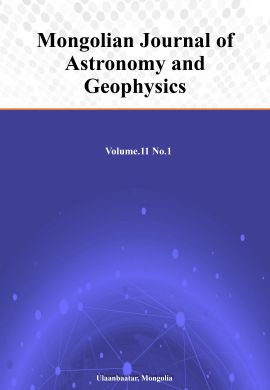Near surface seismic method for detecting active fault Gobi-Altay Fault in Mongolia
DOI:
https://doi.org/10.5564/mjag.v11i1.4189Keywords:
Inversion, Velocity model, MigrationAbstract
Gobi Altay fault is one of the largest intra-continental faults in Asia where was conducted using the seismic exploration survey which is an effective geophysical method for detecting faults. Based on the shallow seismic data from an active seismic survey in surrounded eastern part of Toromkhon valley, Bogd mountain fault zone, Gobi-Alati range, southwestern Mongolia. The main goal of the work was to identify the features of fault zones using seismic instruments to develop a methodology for identifying late Holocene fault zones that are currently eroded. The seismic survey result shows that the combination of shallow seismic migration and 2D velocity inversion model. The seismic data were processed along a straight CMP line and an interpretation was made under the migrated time section and 2D velocity inversion model based on finite element method.
Downloads
211
Downloads
Published
How to Cite
Issue
Section
License
Copyright (c) 2024 Boldbaatar Ganbaatar, Nomin-Erdene Erdenetsogt, Batsaikhan Tserenpil, Nyambayar Tsend-Ayush, Battogtokh Davaasambuu, Buyankhishig Gantumur

This work is licensed under a Creative Commons Attribution 4.0 International License.
Copyright on any research article in the Mongolian Journal of Astronomy and Geophysics is retained by the author(s).
The authors grant the Mongolian Journal of Astronomy and Geophysics a license to publish the article and identify itself as the original publisher.

Articles in the Mongolian Journal of Astronomy and Geophysics are Open Access articles published under a Creative Commons Attribution 4.0 International License CC BY.
This license permits use, distribution and reproduction in any medium, provided the original work is properly cited.




